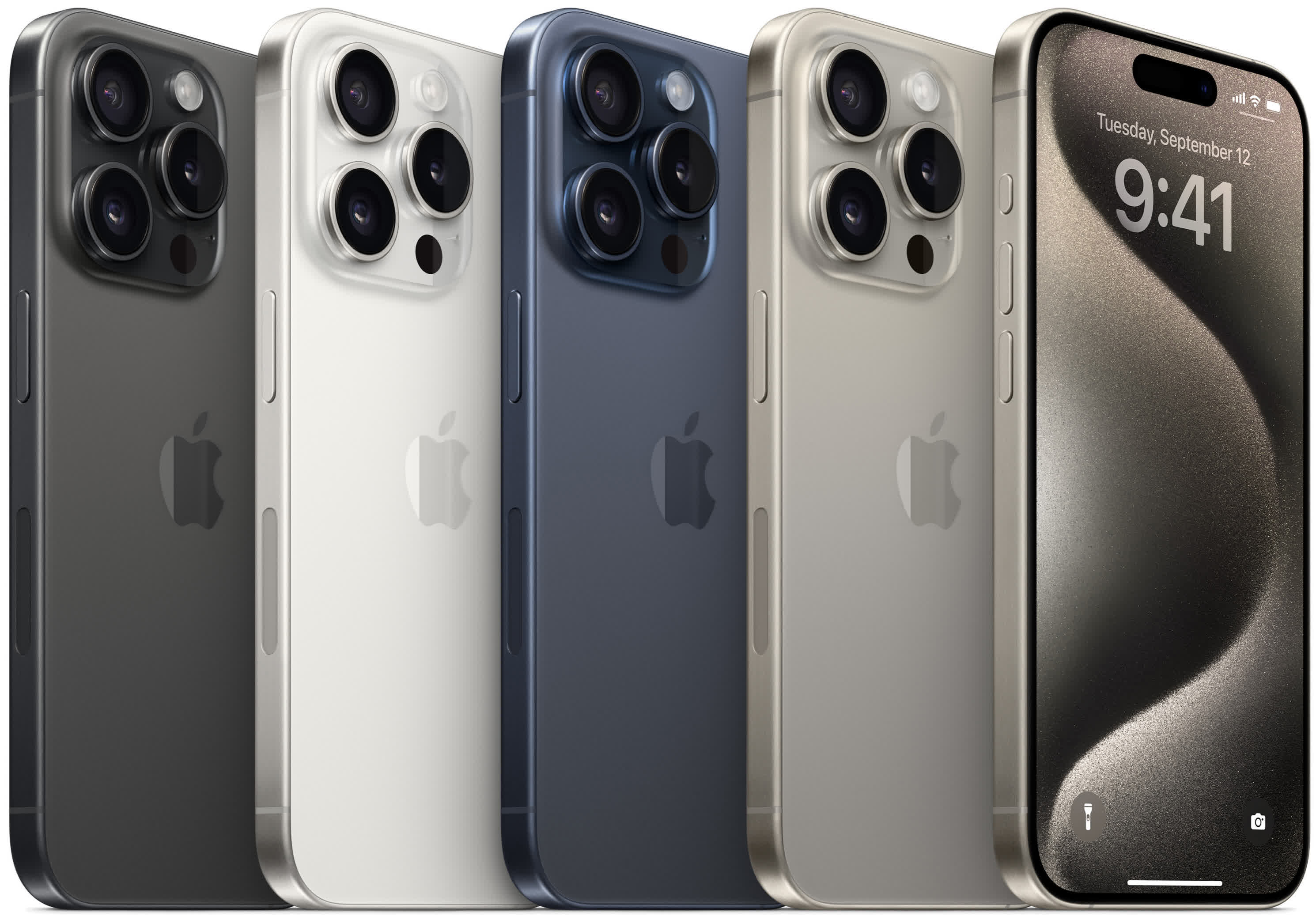In brief: It's no secret that Apple's new A17 Pro SoC is a mobile powerhouse. The chip is so powerful that its single-threaded performance is within 10% of the high-end AMD Ryzen 9 7950X and Intel Core i9-13900K in Geekbench. But Apple's product does have the disadvantage of a much lower frequency and can't match the desktop chips in multi-core performance, of course.
Apple unveiled its iPhone 15 Pro this week, a handset powered by the all-new A17 Pro SoC. The industry's first 3nm chip features 19 billion transistors and is comprised of a six-core CPU, made up of two performance cores and four efficiency cores, alongside a 16-core neural engine that can process up to 35 trillion operations per second.
Tom's Hardware notes that the A17 Pro's single-core Geekbench 6 performance is about 10% faster than its predecessor, the A16 Bionic, which is what Apple said during its Wonderlust event. Apple's latest chip's single-core score of 2,914 puts it in the same category as many desktop processors and is only around 10% behind the Ryzen 9 7950X (3,172) and Core i9-13900K (3,223).
These sorts of synthetic benchmarks don't tell the whole story, though. For a start, the A17 Pro's 3.75GHz operating frequency (according to the benchmark) is far behind the 5.80GHz of the Ryzen and 6.0GHz of the Raptor Lake CPUs. It's also comparing a mobile chip with a TDP of 7.5 - 8W against desktop CPUs with TDPs over 100W.
The other factor is the core count. The A17 Pro's six cores help the chip to a multi-core score of 7,199, which is just 3% more than the A16 Bionic, suggesting that Apple made minimal architectural changes in its latest SoC generation, if any. The Ryzen 9 7950X (16 cores) more than triples the A17 Pro's multi-core score to 22,240, while the 24-core (8 performance, 16 efficient) i9-13900K has an even higher score of 22,744.
The A17 Pro certainly decimates Qualcomm's current most powerful mobile chip, the Snapdragon 8 Gen 2, in both Geekbench 6 single-core (2,050) and multi-core (5,405) benchmarks.
The A17 Pro also features a six-core GPU with hardware-accelerated ray tracing that is said to offer up to four times faster ray tracing compared to software ray tracing on the A16 Bionic. It allows PC/console games such as Assassin's Creed Mirage, Death Stranding, and the Resident Evil 4 Remake to be played natively on the handset.
